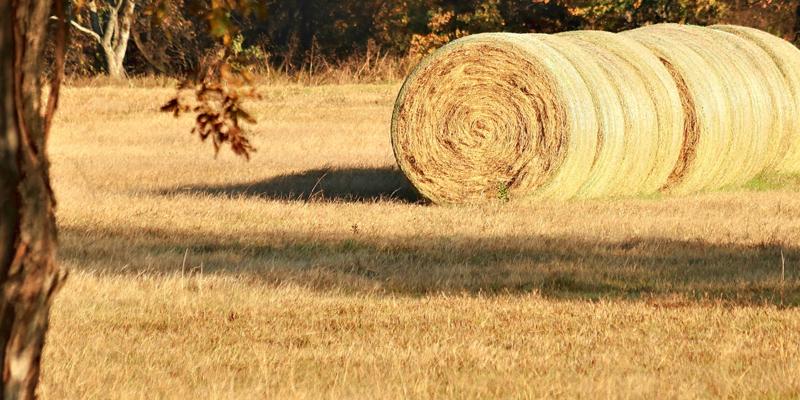
Fall pastures may require fertilizer for optimal spring grazing. (Photo: RL Hamblen, bugwood.org)
This has been an unusual weather year. Endless rain this spring turned into a hot and dry summer that did not want to step aside to let fall rain and cooler temperatures mark the change of the season. This has left us with very dry pastures.
Skip the Nitrogen when Fertilizing Your Fields in a Dry Autumn
Regardless of the current conditions, there are steps you can take to make sure your pastures will be ready to support your grazing animals next spring. Normally we recommend you apply a split application of nitrogen fertilizer (40-60 lbs./ac N) in the fall, but in years where we do not receive rain until the end of October it is recommended that you do not use nitrogen fertilizer. When the rain arrives so late there is not enough time in the growing season for the pasture grasses to use the nitrogen.
Healthy spring forage and hay yields benefit from careful pasture management in the fall.
Soil Sampling is Key
Never fear, there is another method to care for your pasture. But before we get ahead of ourselves, we need to figure out when the soil in the pasture was last tested. If it has been a few years, then it is time to send in a soil sample for analysis. If you tested last year and your results showed deficiencies, then it is time to test again to see if your amendments improved the nutrient level in the soil!
Nitrogen cannot be used efficiently by plants in soils that are deficient in an essential nutrient or have low pH. So, get out your shovel and take those soil samples. A guide on how to sample soil may be found here.
Once the soil analysis questions have are resolved, you may get back to your fertilizer project. In years when the fall rains arrive late, the method recommended for proper fertilization is called the T Sum method.
The T-Sum Method Helps Determine Best Fertilizer Application
This method is explained in the Oregon State University Extension publication Nutrient Management in Pastures: Western Oregon and Western Washington by Moore, G. Pirelli, S. Filley, S. Fransen, D. Sullivan, M. Fery, and T. Thomson You may find the full document here.
This insert from the publication gives a brief explanation of the method:
Contact Us for More Information
Contact the Clackamas Soil and Water Conservation District if you have questions about soil health and pasture management. Email us at planning@conservationdistrict.org or give us a call at 503-210-6000.

